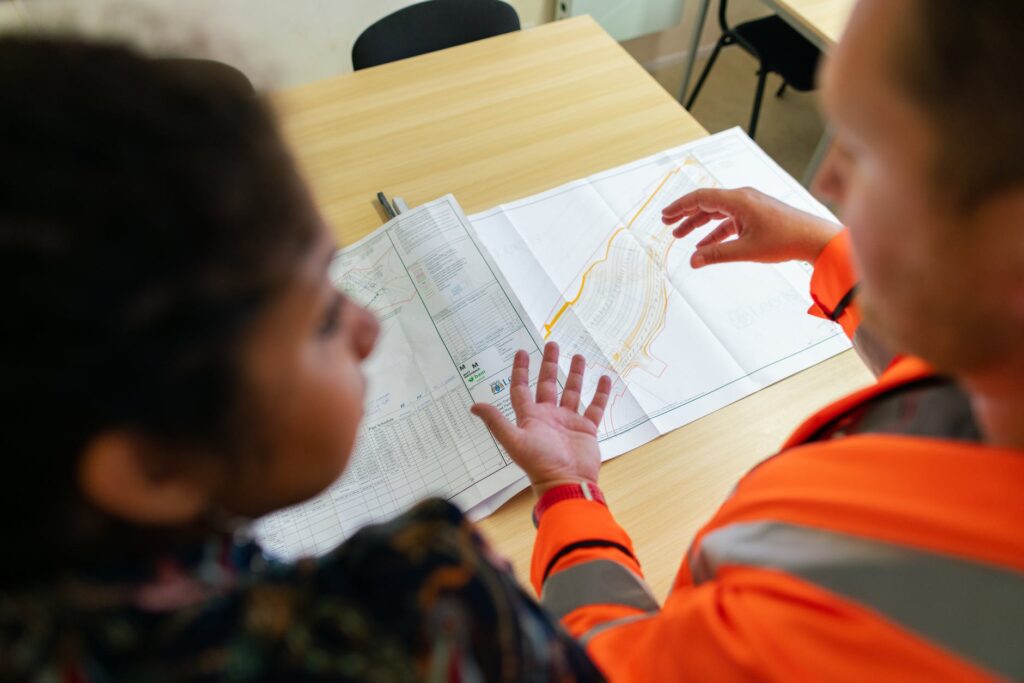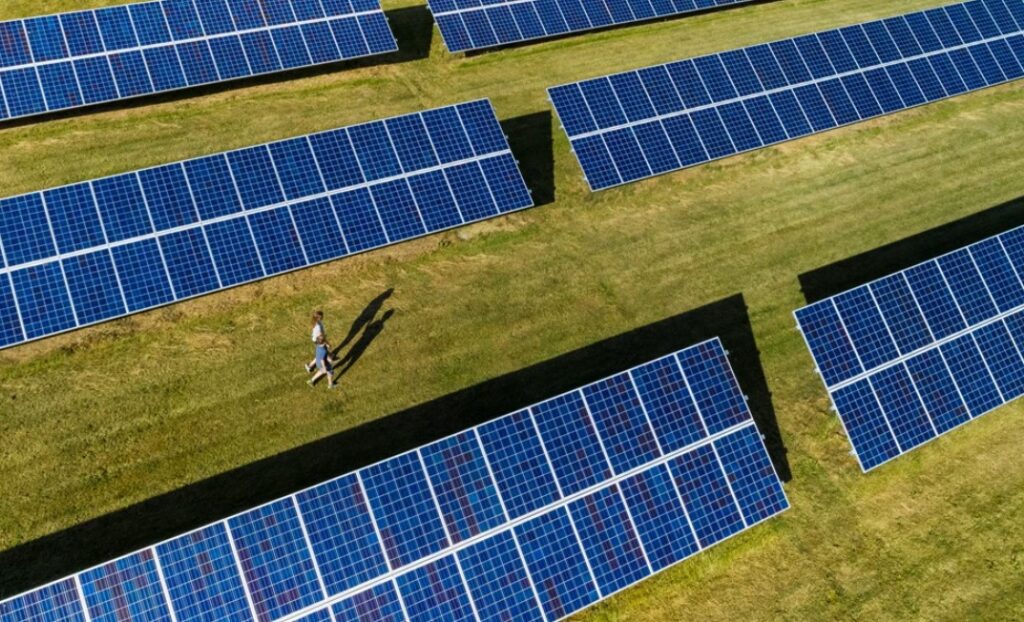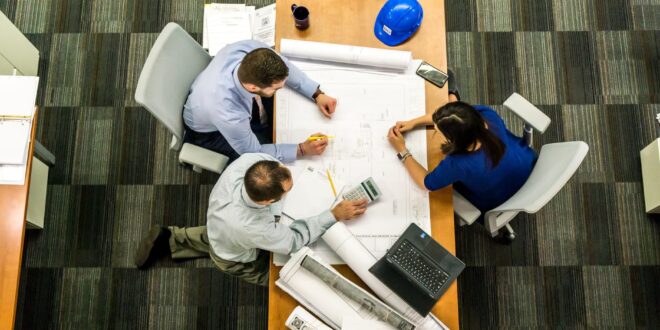Civil engineers are the lifeblood of society. They build the world around us, transform lives, and inspire communities all around the planet. They plan, design, construct and maintain infrastructure projects, including roads, railways, dams, bridges, tunnels, buildings, airports, sewage systems, and more.
As such, civil engineers play a vital role in developing sustainable infrastructures and paving the way to a greener future.
Let’s look at some of the key steps they’re taking to lead the world on a sustainable journey to net-zero emissions.
Planning for Climate Change

According to BrightonCollege, “Civil engineering technicians are the backbone of every country’s infrastructure development; they must rethink their role and duties if they are to build a more sustainable future”.
That means planning for climate change rather than adding eco-friendly features after completing a project. After all, climate change is no longer a future problem – it’s a crisis that’s happening right now.
To plan for climate change, environmentally-conscious civil engineers start every project by defining the net-zero mindset, outlining key challenges, and creating a roadmap to solving them using innovative, sustainable practices.
They plan for effective usage of resources, with many of them utilizing Building Information Modeling (BIM) to calculate how much resources they need and reduce waste and energy, as well as the use of non-renewable resources.
They factor in every possible environmental impact of the changing climate to ensure they build resilient structures that will withstand unpredictable weather conditions.
Doing so from the get-go instead of later on is paramount for the future.
Using Sustainable Resources

Using sustainable resources in infrastructure development projects means using recyclable and renewable resources that help reduce waste and energy consumption. It means using building materials that will last longer, solar panels that will save more energy, proper insulation that will prevent heat loss, and more.
Timber is one of the best natural materials with a low environmental impact that civil engineers increasingly use in construction.
They use recycled plastic, fiber cement, geopolymer concrete, volcanic ash, and even root veggies as cement substitutes for greener concrete. We can’t think of a better way to use such materials (particularly those headed to a landfill) than to recycle and use them in construction.
Reducing Carbon Emissions During Engineering Projects

Infrastructure projects are responsible for around 70% of global greenhouse gas emissions.
That’s why civil engineers are looking into ways to cut down on carbon emissions during their projects instead of only focusing on post-build decarbonization.
They use CCUS (Carbon Capture, Usage, and Storage) technology to capture carbon emissions during construction and use or store them to prevent them from escaping into the atmosphere. For instance, they can store it deep underground in geological formations.
Additionally, many of them use prefabrication techniques to manufacture various building materials (e.g., steel or cement) offsite in a controlled environment. That way, they can reduce carbon emissions and waste, decrease costs, and increase performance and efficiency.
Getting materials from local suppliers helps, too, as it reduces transportation costs and energy.
Harnessing Renewable Energy Sources

Renewable energy sources play an important part in sustainable civil engineering. Solar, wind, and geothermal energy are some of the best renewable energy sources that civil engineers utilize when building sustainable infrastructures.
Some of the best examples of green development projects include Singapore’s Supertree Grove, Milan’s Vertical Forest, and the Bahrain World Trade Center’s wind turbine generators.
Singapore’s solar-powered supertrees are part of the Gardens by the Bay landscaping project. Apart from generating solar power, they collect rainwater and help nearby conservatories disperse heat and regulate temperature.
Milan’s Vertical Forest is a pair of residential towers with over 900 trees on 8,900 square meters of terraces. They absorb carbon dioxide, produce oxygen, and help regulate temperature. They even collect and filter rain and greywater and use solar and geothermal energy to supply the tenants with heat and electricity.
The Bahrain World Trade Center has three wind turbines built into the skybridges that connect the two towers. It’s the first skyscraper to integrate wind turbines into its design.
Another example of using renewable energy in infrastructure is Hyperloop, one of Elon Musk’s greatest inventions so far.
This ground-breaking transportation system will use low-pressure transit tubes and magnetic levitation to achieve a speed of up to 750 pmh – 2-3 times faster than a bullet train.
It will reduce carbon emissions and energy consumption and even draw power from various energy sources along the route. If all goes according to plan, Hyperloop will be one of the most eco-friendly transportation modes.
Implementing Blue-Green Infrastructure Elements

Blue-green infrastructure (BGI) refers to an engineering approach in urban and land-use planning for tackling urban and climatic challenges by incorporating nature into designs.
Blue refers to water bodies, including rivers, ponds, wetlands, and water treatment facilities, while green refers to trees, forests, lawns, hedgerows, parks, fields, etc.
Building with nature is an excellent way to develop sustainable and resilient infrastructures that will be able to withstand changing weather conditions. It helps improve stormwater management, save more energy, decrease energy costs, reduce flooding, improve water quality, enhance urban aesthetics, and much more.
A growing number of cities worldwide are developing BGI initiatives to unite water management and green infrastructure and enjoy environmental, ecological, economic, and social benefits.
The Journey to Net Zero Is Clear

We know what must happen to get on the net-zero path, but are we ready for the journey? It’s a long one, but it’s imperative for the planet we call home. As they say, there is no planet B, so we have to keep our one and only home safe and healthy.
Civil engineering is a crucial part of that journey, with civil engineers being some of our strongest allies in the battle against climate change and global warming. They are rethinking infrastructure development to make room for sustainable practices and build a greener future that will improve our quality of life.
The steps above are only some of the key factors they’re focusing on to achieve that goal. With the growing population, public awareness of climate change, and demand for sustainable living, we can expect more innovative practices that will take civil engineering and the entire world to new heights.
 Imagup General Magazine 2024
Imagup General Magazine 2024



